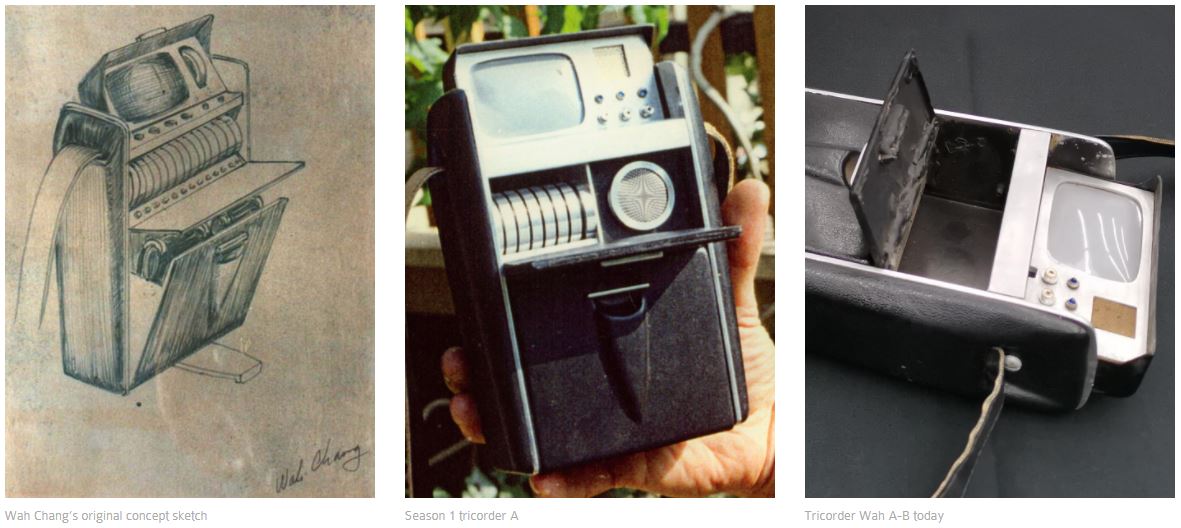The much-anticipated classic Star Trek tricorder from The Wand Company is still several months away (due to pandemic-related delays impacting their original timeline), yet the team at TWC is keeping fans salivating with new monthly insights into the eventual product we’re all waiting for.
In June, the company went into great detail about some of the planned functionality of the tricorder replica, focusing on a newly-created feature — not seen in action in The Original Series, but implied by original tricorder designer Wah Chang’s concept plans for the futuristic scanning computer.
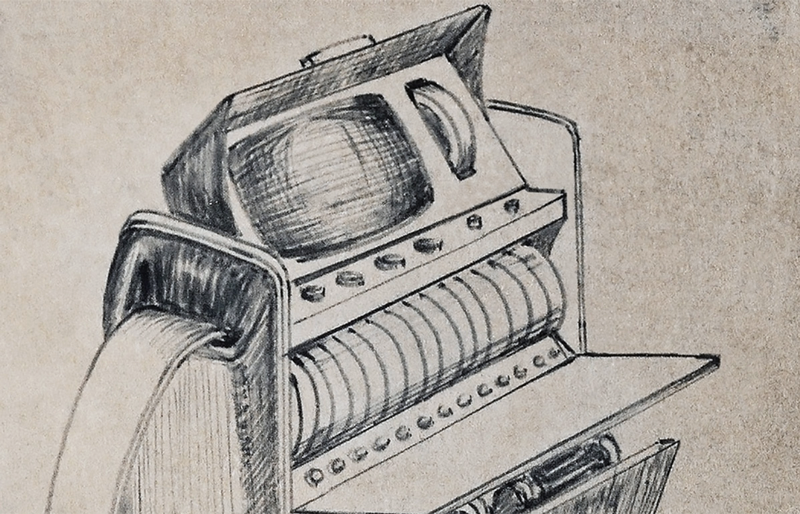
First discussed in their April updates, The Wand Company is taking inspiration from Chang’s design, focusing on the central row of silver-colored components — extrapolating their intended function as removable ‘data discs,’ as one appears to be “inserted” into a slot next to the display screen in the above drawing.
The collection of circular discs, which were not specifically used on-screen in the television series, will use color-based identification functionality to trigger different features of The Wand Company’s tricorder replica — everything from activating the built-in, real-world sensors TWC’s tricorder will have in its housing to Enterprise starship status updates, and more.
Here’s TWC’s commentary on this ‘data disc’ concept:
Our first task was to design an ejector mechanism that would work smoothly and reliably, and fit in the limited space the prop has to offer in this area. The eight-disc array is fairly tightly boxed in between the hood, the lower compartment cavity wall and the back of the tricorder. Disc insertion and ejection is further complicated by the fact that the disc diameter is larger than the apparent opening the discs must pass through to be taken in and out of their dock.
An array of spring-loaded latching switches attached to thin, crescent-shaped, bendy ‘catcher’s mitts’, which flex to hold and eject the discs, coupled with an upper “glamour bar” that rotates out of the way when a disc is ejected, provided the aesthetic functionality we were after. With all the discs inserted, and while being displayed in a cabinet, the glamour bar springs into position over the top of the array and the tricorder looks perfectly like a pristine version of the first season hero.
But for those that want to boldly go beyond display and into the realm of realistic function, pressing any one of the discs ejects it with a satisfyingly premium click. The latching switch at the back of each disc slot tells the tricorder’s software which of the slots have discs in them.
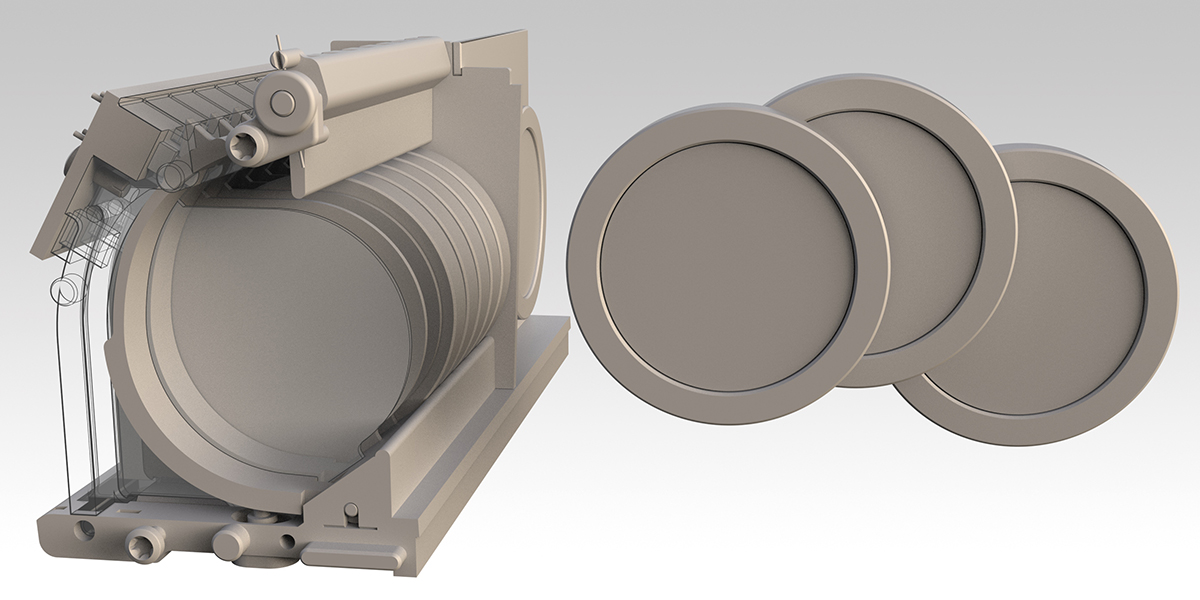
With the ejector’s mechanical design well on the way to completion, we went to work on making the discs a plausibly functional part of the tricorder’s operation. Initially, we considered ways of ‘writing’ even just small amounts of data wirelessly to the discs (using an RFID chip embedded in the disc), but technical issues caused by the proximity of discs to each other, and the metal outer ring, closed down that idea.
Given the capability of the tricorder’s internal electronics, and the onboard memory’s ability to cope with the functions we had planned for it, our thinking moved away from the complexity of adding hardware to each disc. To make the discs integral to the tricorder’s operation, for example, using them to activate the tricorder’s various functions, the tricorder has to be able to identify each disc.
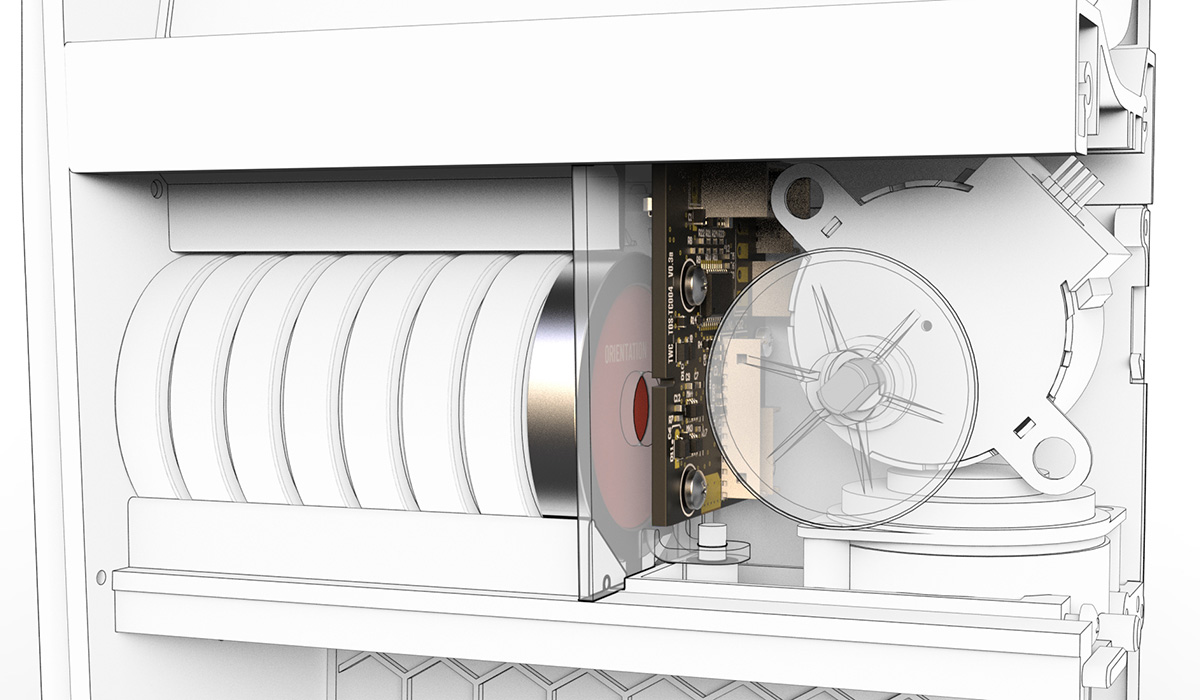
To simplify the identification process and add another level to the interaction required by the user to operate the tricorder, we chose to only monitor the disc slot furthest to the right. Using this as the activation position ties nicely in with the possibility that, in the hero prop’s original incarnation, this particular disc was the removable one. The right-most slot also allows us to hide the disc identification sensor behind the moiré panel.
To identify the discs, we chose colour sensing: it is human-readable, robust and reliable, and yet being non-obvious to the untrained user, appears suitably sci-fi. To add the necessary colour to the otherwise metal discs, in the absence of any hard evidence, once again Wah Chang’s sketch points the way. In it, what looks like a disc can be seen protruding from a socket next to the display. Although this particular feature never made it into the final design, the image shows what looks like a disc with a rim wrapped around a contrasting material.
For the actual colours, The Original Series has a large and vibrant colour palette and there are plenty of richly coloured memory blocks and console switches which, between them, offer more than enough colours to provide an in-universe range of coloured disc inserts that an optical sensor can reliably differentiate between.
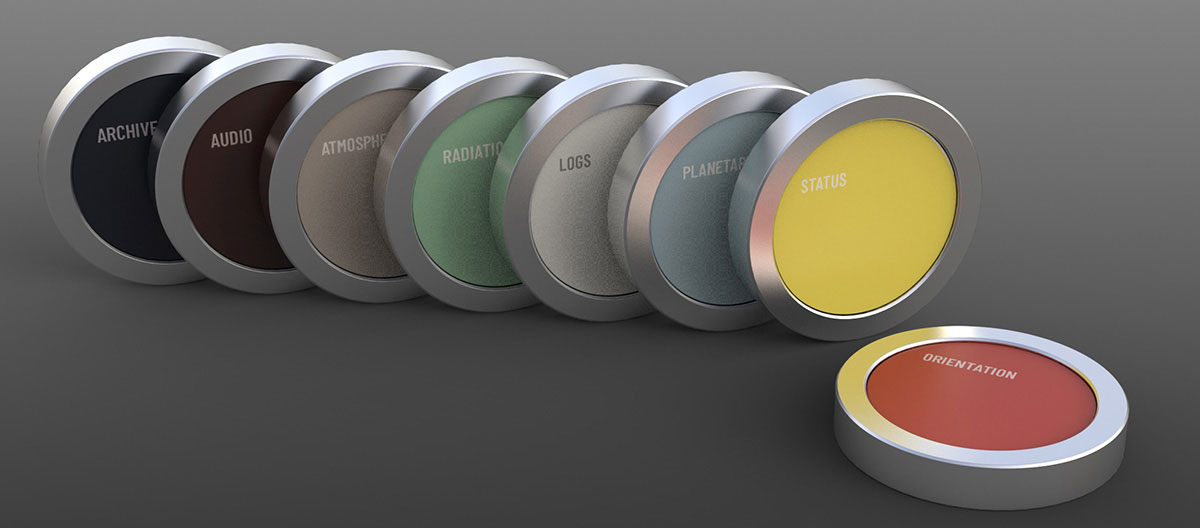

In use, inserting any of the discs into the right-most slot enables the user to access that particular disc’s set of related functions, information or files, and calls up any previously recorded data for those sensor functions. By using them in this way to control the tricorder, the discs become a properly engaging and integral part of the user interface, each one effectively acting as a specific data access key.
The sensors, such as humidity, temperature and pressure, are interrelated so instead of assigning the function of a single sensor to each disc (and then leaving the other exciting tricorder functions buried in somewhere else in the user interface), we grouped the tricorder’s mix of dynamic and static information, capabilities and functions together more intuitively by usage.

While the specifics of each of the eight discs’ data contents and “in-use” functionality have not yet been fully defined beyond the above chart, it’s clear that TWC’s plans for this replica device are certainly high-level in concept.
The company is also taking significant advantage of fan feedback as they share updates with the public; the original color selection for these discs were much more “rainbow bright” versions of each color, until an Original Series fan suggested that TWC take direction from the classic Trek sets’ more muted color palette.
![]()
You can read much more about this new ‘data disc’ concept at TWC’s Tricorder Blog entry on the topic, as well as another post from this month about how the company has worked to recreate the moire pattern seen on the classic Tricorder design, and implemented motorized action behind that part of the product’s build.
Originally planned for a summer 2021 launch, The Wand Company’s classic Star Trek tricorder replica is now expected closer to 2022, or into next year entirely; with these kind of ongoing progress reports, though, we’re certain it’ll be worth the wait.

